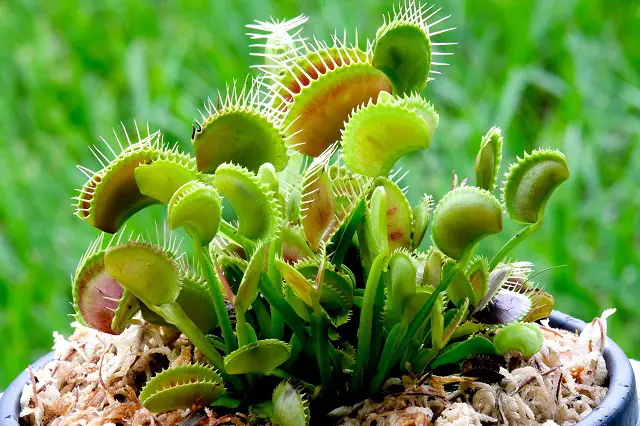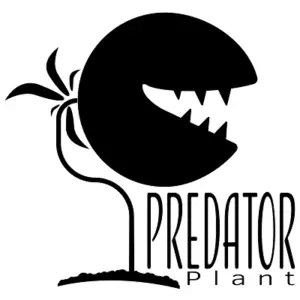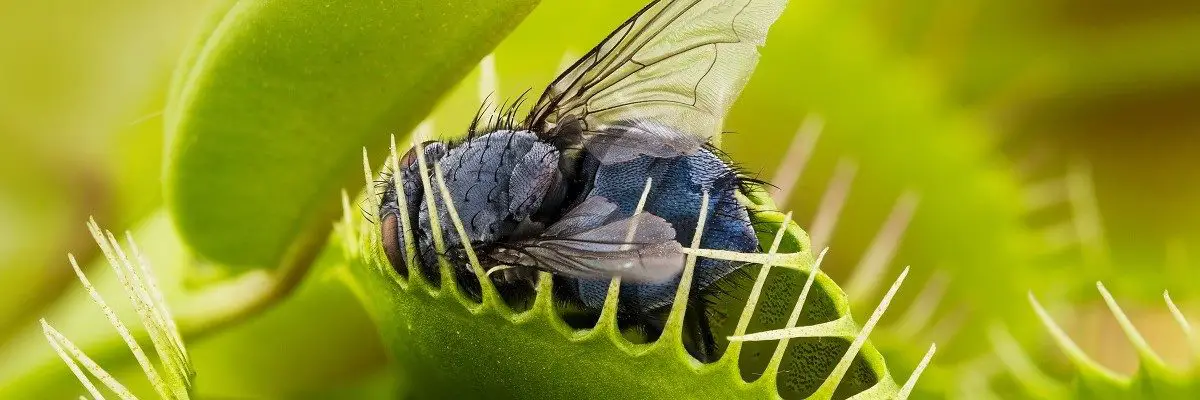In addition to eating insects and arachnids, the Venus flytrap also gets nutrients from the soil. Numerous insects and spiders, including ants, beetles, and grasshoppers, fall victim to the flytrap.
It was unclear until recently how exactly carnivorous plants digest their food. A new study, which examined the Venus flytrap (Dionaea muscipula), reveals that repeated contact between insects and the plant’s sensory hairs can release digestive juices as a result of the insect thrashing around.
According to the study, electrical signals activate enzymes. The signal is triggered when the insect is captured. The first and second signals do not trigger except for closing the trap, but the third one triggers the plant to produce the jasmonate hormone.
To activate the digestive glands, two additional electrical signals must be sent. Gland cells ooze membrane-filled liquid bubbles called secretory vesicles upon receiving these signals. Jasmonate can trigger this membrane bubble formation even without tripping the sensory hairs.
What Happens Next?
After closing the trap, the digestive glands along the leaf’s interior edge secrete fluids that break down the insect’s soft parts, kill bacteria, and extract nutrients from the insect through enzyme breakdown. The leaf then absorbs the nutrients, and the exoskeleton is released five to twelve days after the leaf insect was captured. Once the trap has caught three or five prey, it will no longer be able to capture them and will simply spend another two to three months photosynthesizing before dying.
It is sometimes difficult for the plant to digest the bugs it captures. There are cases where the plant might give up and wither the leaf instead of consuming the bug. The plant will remain intact in these cases, but the leaf will wither.
After a couple of weeks, a closed leaf will reopen if the plant has successfully consumed the prey. The plant can consume all the soft tissue on the insect, but some will be left behind.
The Venus flytrap is found only in coastal sand shrub bogs along the Southern and Northern Carolina coasts of the United States and is classified endangered species. The Venus flytrap ecosystem is prone to fires, clearing out competing plants, and releasing nitrogen into the soil. Venus flytraps can therefore obtain a third of their nitrogen supply from insect prey shortly after a fire. A fire does not need to occur again for the Venus flytrap population to thrive. However, if the fire does not occur for ten years, the population declines due to competition with other plants for light and insects. It is fascinating to observe how organisms are able to compensate for nutrient deficiencies in soil by adapting to stressful conditions through their behavior as predators.

Conclusion
Flytraps grow in areas with low nutrients in the wild. Consequently, they have evolved so that they can capture and consume bugs. The purpose of consuming bugs is to obtain key nutrients and supplement their diet.
There are trigger hairs on the leaves of a Venus flytrap. Insects that touch those thin filaments inside the traps cause the trap to close. In order for Venus flytraps to begin withering, they need to open and close between 3 and 7 times. Upon closing multiple times, Venus flytrap leaves do not die but wither. It will then run out of energy and cease functioning, eventually turning black. Venus flytrap traps can open and repeatedly close before they wither. After multiple triggers, the trap will start turning black.


